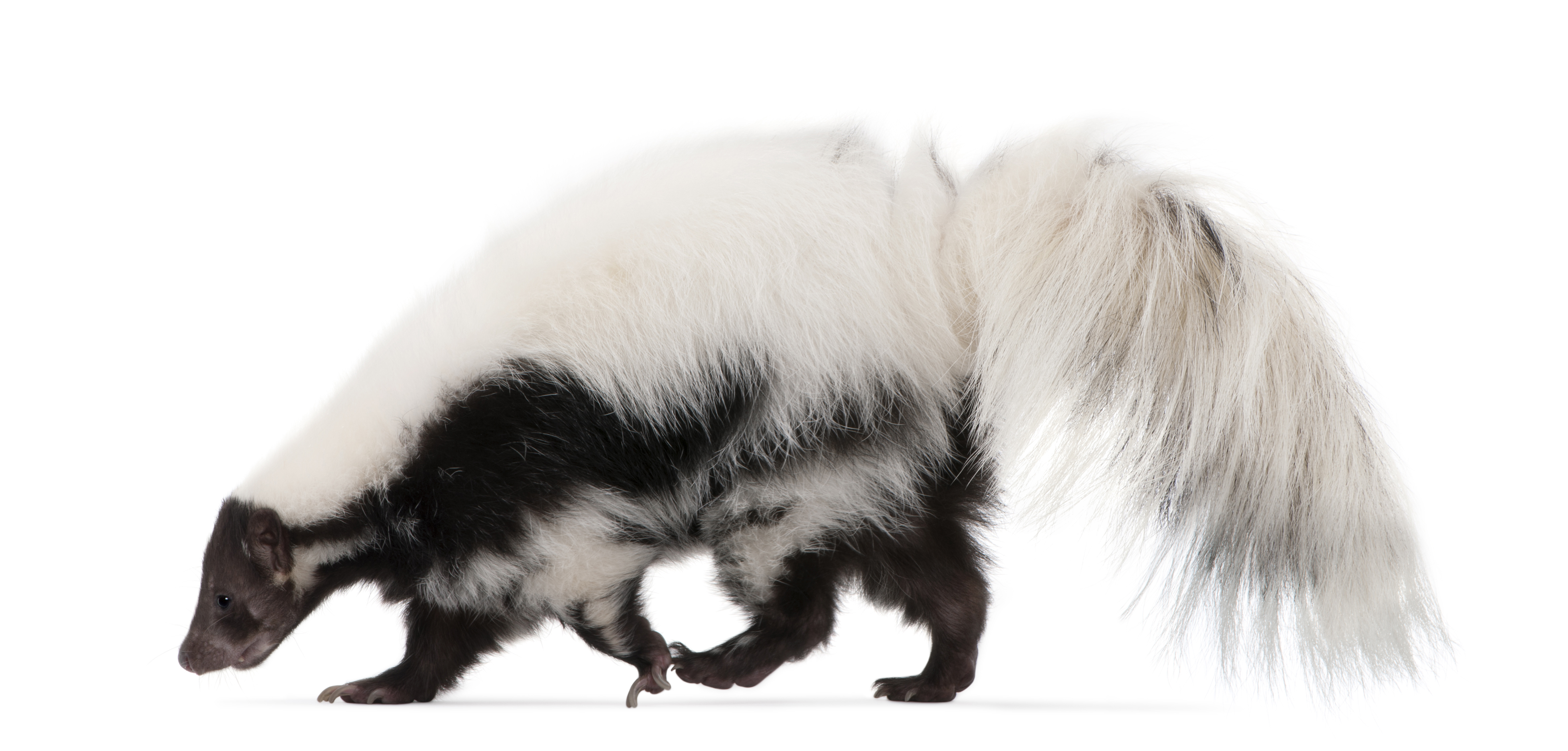
Despite a reputation for stinking up the neighbourhood, skunks are actually helpful creatures that spray their offensive perfume only under extreme circumstances.
Most skunks are nocturnal and feed at night. What they eat depends on what is available. They are omnivorous but feed mostly on insects and small rodents. Skunks have adapted to living near people and will eat garbage and food left out for pets. Few animals eat skunks, but the great horned owl likes to make a meal of them.
What’s In a Name?
Scholars think the name skunk is derived from the Abenaki (Algonquin dialect) word “segonku,” which means “one who squirts.” Skunks are sometimes called polecats.
Making a Stink
Foul-smelling skunk oil is produced in two glands near the anus. The white or yellowish oil is a mix of sulphur chemicals.The oil can also sting the skin and temporarily blind a creature. Skunks can shoot a fine spray or a steady stream, and they can fire from one or both nipples. They can hit their enemies from a distance of up to 15 feet (4.6m), and even farther if the wind is right. A skunk makes enough oil to spray five or six times, after which the glands need about 10 days to make more. Skunks spray only as a last resort. They will warn enemies by stomping their feet, posturing with a raised tail and walking upright on front paws. Once sprayed, the odour is very difficult to get rid of. Clothes should probably be thrown away, but you can try washing them with a bleach solution. Skunks rarely spray each other and will not spray in their own dens.
Growing Up
A skunk litter consists of two to 10 babies called kits. Newborn skunks are born blind and furless. Their skin shows pink-and-black striped markings. Kits nurse until they are about 2 months old, then they leave the nest and learn to forage for food. Skunks can live up to 10 years, but in the wild the average life span is two years.
Home Sweet Home
When it is cold, skunks live in communal underground dens. They do not hibernate, but they are inactive and eat very little. When it is warmer, they live solitary lives in burrows or hollows.
Scientific Classification
There are 11 species of skunks. Some scientists classify the skunk as a subfamily of the Mustelidae family of weasels, but genetic evidence suggests they may not be as closely related as once thought.
Eastern Spotted Skunk
(Spilogale Putorius)
Smaller than a striped skunk, the spotted skunk is 16 to 23 inches long (40 to 58cm) and weighs up to 3 pounds (1.4kg). It is an excellent climber with sharp claws. It does a strange sort of handstand to warn enemies before it sprays.
Striped Skunk and Hooded Skunk
About the same size as a striped skunk, the hooded skunk has longer, softer fur than its cousin.
Eastern Hog-Nosed Skunk
(Conepatus Leuconotus)
Hog-nosed skunks are named for their snouts. They are slow-moving and den in rocky crevices. They are the largest kind of skunk.
Sunda (Indonesian)
Stink Badger
(Mydaus Javanensis)
The scientific community has debated whether stink badgers should be classified with the skunk or the badger family. Recent genetic information suggests they should be in the skunk family.
—[email protected]